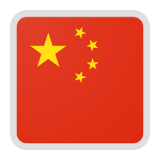- Home
- /
- Programming
- /
- Graphics
- /
- Fun with SAS ODS Graphics: Thar's Gold (and Silver and Bronze) in Them...
- RSS Feed
- Mark Topic as New
- Mark Topic as Read
- Float this Topic for Current User
- Bookmark
- Subscribe
- Mute
- Printer Friendly Page
- Mark as New
- Bookmark
- Subscribe
- Mute
- RSS Feed
- Permalink
- Report Inappropriate Content

Inspired by simplexCT's neat How to Create a Flag Chart in Excel (countries winning the most Summer Olympics medals from 1896-2016), here's a SAS ODS Graphics scatter plot with flag markers for the top 5 medal-winning countries at the just-concluded Tokyo 2020 Olympic Games (with a gold-silver-bronze bar chart tossed in for background color!).
* Fun with SAS ODS Graphics: Thar's Gold (and Silver and Bronze) in Them Thar Olympics!
Based on simplexCT's neat Excel Flag Chart simplexct.com/how-to-create-a-flag-chart-in-excel
Data, flag icons courtesy of Google google.com/search?q=olympic+medal+count;
data medals; * Read data for top 5 medal-winning countries;
input Rank Country $15. Gold Silver Bronze Total;
datalines;
1 United States 39 41 33 113
2 China 38 32 18 88
3 Japan 27 14 17 58
4 Great Britain 22 21 22 65
5 ROC 20 28 23 71
; * Transpose from 1 row per country to 1 row per country/medal;
proc transpose data=medals out=medalsT(rename=(_name_=Medal col1=Medals));
by rank country notsorted;
var Gold Silver Bronze Total;
* Create temp variables for charting, exclude totals;
proc sql noprint;
create table medalsT2 as
select m.*, max(medals)+1 as maxmedals,
case medal when 'Gold' then 1 when 'Silver' then 2 when 'Bronze' then 3 end as medalnum,
trim(upcase(country))||' '||compress(put(medals,comma5.)) as countrymedals
from medalsT(where=(medal^='Total')) m;
select min(medals)-1 into :minmedals from medalsT2;
select max(medals)+1 into :maxmedals from medalsT2;
* Format medal numbers;
proc format;
value medal 1='GOLD' 2='SILVER' 3='BRONZE' other=' ';
* Scatter plot of medals won with country flag markers;
ods graphics / width=8.5in height=8.5in attrpriority=none; * Bar chart used for gold-silver-bronze background;
proc sgplot data=medalsT2 noautolegend nowall noborder;
inset '2020 Olympics' / position=topright textattrs=(size=16pt weight=bold);
styleattrs datasymbols=(US_Flag CH_Flag JP_Flag GB_flag ROC_Flag);
symbolimage name=US_Flag image="/home/ted.conway/flags/US_Flag.png"; * Flag icons for top 5 medal-winning countries;
symbolimage name=CH_Flag image="/home/ted.conway/flags/CH_Flag.png";
symbolimage name=JP_Flag image="/home/ted.conway/flags/JP_Flag.png";
symbolimage name=GB_Flag image="/home/ted.conway/flags/GB_Flag.png";
symbolimage name=ROC_Flag image="/home/ted.conway/flags/ROC_Flag.png";
vbarbasic medalnum / response=maxmedals stat=mean barwidth=1 colorresponse=medalnum colormodel=(gold silver cXcd7f32)
nooutline baselineattrs=(thickness=0) transparency=.5 baseline=&minmedals dataskin=pressed;
scatter x=medalnum y=medals / group=rank markerattrs=(size=18pt) datalabel=countrymedals datalabelpos=right datalabelattrs=(color=black);
xaxis display=(nolabel noline noticks) type=linear min=.5 max=3.5 offsetmin=0 offsetmax=0 valuesformat=medal.;
yaxis display=(noline noticks) label="MEDALS" grid ranges=(&minmedals-&maxmedals) offsetmin=0 offsetmax=0;
run;




- Mark as New
- Bookmark
- Subscribe
- Mute
- RSS Feed
- Permalink
- Report Inappropriate Content
@tc , How about this one ?
It is from Graph Speaking Blog .
data medals;
input Rank Country $15. Gold Silver Bronze Total;
datalines;
1 United States 39 41 33 113
2 China 38 32 18 88
3 Japan 27 14 17 58
4 Great Britain 22 21 22 65
5 ROC 20 28 23 71
;
proc transpose data=medals out=want;
by Rank Country ;
var Gold Silver Bronze Total;
run;
data want;
set want;
if _name_='Gold' then order=1;
else if _name_='Silver' then order=2;
else if _name_='Bronze' then order=3;
else order=4;
run;
proc sort data=want;by order;run;
ods graphics/reset=all;
proc sgpanel data=want noautolegend;
title '2020 Olympics';
panelby _NAME_ / layout=panel columns=4 onepanel sort=data novarname spacing=5;
styleattrs datacontrastcolors=(gold Silver cXcd7f32 navy );
dot Country / response=col1 group=_NAME_
nostatlabel markerattrs=(symbol=circlefilled size=20) datalabel;
rowaxis discreteorder=data display=(nolabel) fitpolicy=none;
colaxis integer display=(nolabel);
run;
- Mark as New
- Bookmark
- Subscribe
- Mute
- RSS Feed
- Permalink
- Report Inappropriate Content
April 27 – 30 | Gaylord Texan | Grapevine, Texas
Registration is open
Walk in ready to learn. Walk out ready to deliver. This is the data and AI conference you can't afford to miss.
Register now and lock in 2025 pricing—just $495!
Learn how use the CAT functions in SAS to join values from multiple variables into a single value.
Find more tutorials on the SAS Users YouTube channel.
SAS Training: Just a Click Away
Ready to level-up your skills? Choose your own adventure.



